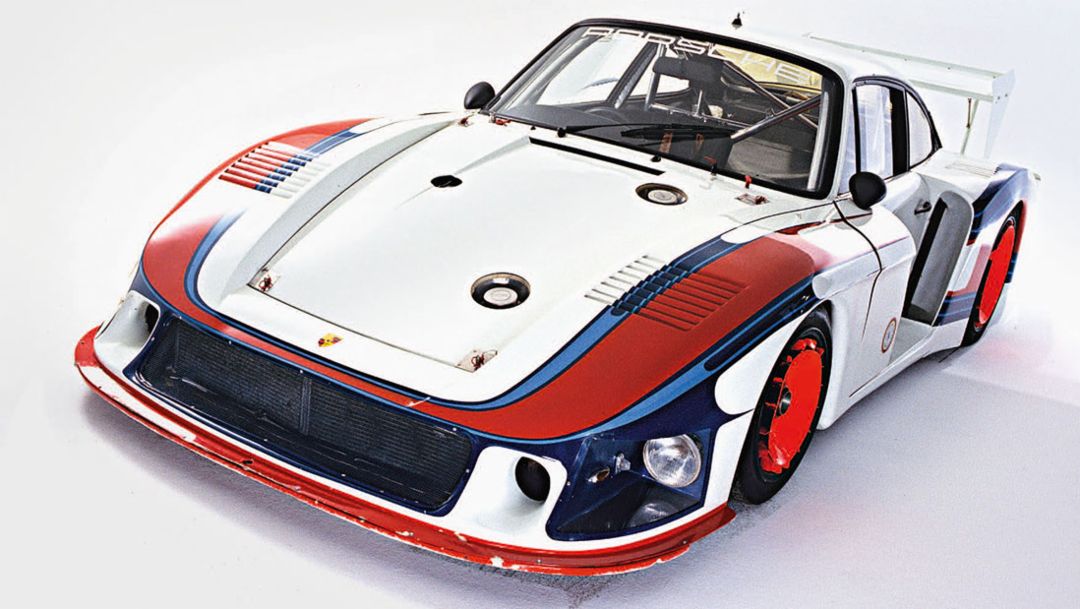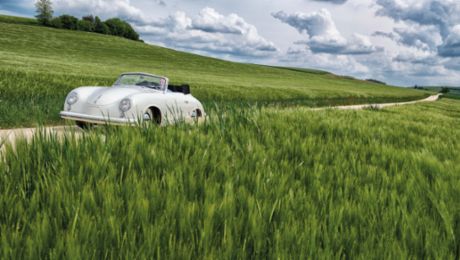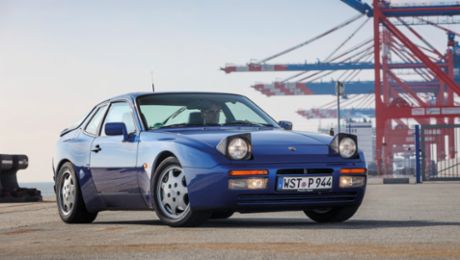Fact 13
Sometimes there’s nothing you can do but shake your head in disbelief: That’s what happened to engineer Norbert Singer in 1971 when Derek Bell told him that he had pushed the engine of his 917 to 8,100 rpm at the Hunaudières Straight during pre-training. Singer calculated a resulting speed of 246 mph.
Fact 14
A pink race car. In 1971, head-shaking again. A 917/20, also known as "the Pink Pig". Porsche designers Anatole Lapine and Dick Söderberg drew the best cuts of meat onto it, similar to a butcher’s carcass diagram. The idea was born when Lapine saw the sweeping car for the first time.
Fact 15
Technical leeway: In 1973, the Porsche works team entered the 911 Carrera RSR 3.0 in the prototype class, which aims at finding solutions for the future. The future according to Porsche looked like this: 12-inch rear tires, the braking system of the 917 and a so-called "Mary Stuart Collar" – a rear spoiler that ran around the entire rear fender.
Fact 16
In 1974, Porsche shifted into turbo mode with the 911 Carrera RSR Turbo 2.1. It was the first of its kind entered at the 24 Hours of Le Mans. In terms of the intercooler, the six-cylinder boxer engine benefits from the experience gained with the 917/10 and 917/30 in America.
Fact 17
1977: When his car gave up due to an engine breakdown, Jacky Ickx changed to the team of Jürgen Barth and Hurley Haywood without further ado, since this duo was lagging behind after a fuel pump replacement. Ickx pushed the 936 Spyder through the night for seven and a half hours. When the last factory Renault dropped out on Sunday afternoon, Porsche was ahead of the others with alead of 250 kilometers. Then the bad news: a damaged piston. It took just 42 minutes to fix the problem by switching off one cylinder – and Jürgen Barth managed to get the car across the finishline as the overall winner.
Fact 18
Water instead of air: In 1978, Porsche premieres with a 911 with water-cooled cylinder heads at the start: Moby Dick. With an output of up to 845 hp at short-distance races, it enters the Le Mans racetrack with “just“ 750 hp, but with a top speed of 228 mph it still manages to compete with the prototypes. It is the most powerful 911 ever constructed, though due to its high fuel consumption and some other problems it spends a total of nearly three hours in the pits. In the end, it places 8th.
Info
First published in "rampclassics", issue 4
photos: Studio Orel




